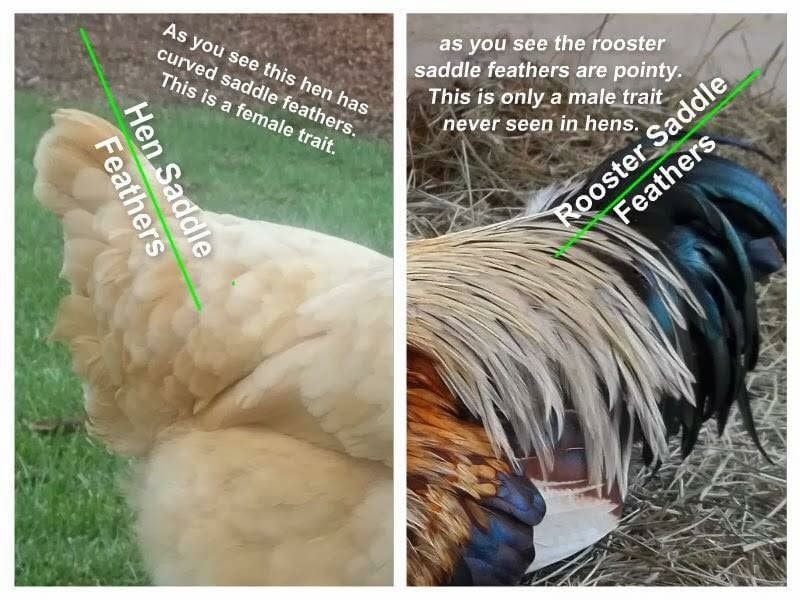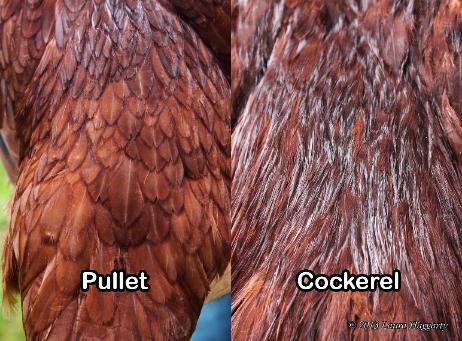Navigation
Install the app
How to install the app on iOS
Follow along with the video below to see how to install our site as a web app on your home screen.
Note: This feature may not be available in some browsers.
More options
You are using an out of date browser. It may not display this or other websites correctly.
You should upgrade or use an alternative browser.
You should upgrade or use an alternative browser.
Please help
- Thread starter Statlc
- Start date
WingsysRoost
Crowing
- Nov 8, 2022
- 938
- 5,726
- 486
I'm not sure exactly what I'm supposed to be looking at in the picture. Is it the fluffy feathers on her back?
JacobH28
Chirping
If the feathers are the concern, then chances are the chicken is molting. Feathers fall off and makes the chicken look funny.
Discussing the feathers.. there are a few considerations.. molting (or even mini molt), mating (even some hens will mount other hens as a sign of dominance), parasites/over preening, bullying (picking at roost time), over crowding, or poor nutrition. Missed/failed predator attacks are usually more obvious than what's seen here.Saw this today on one of our birds... it is only her none of the other 39, can anyone tell what's going on
Please describe age, feed routine including treats and supplements, how much space in the coop and run/range for that many birds? Any roosters, maybe she's his favorite? Do you know if she's actively laying?
Get a look at the skin below the vent and on the abdomen.. after dark with a flashlight if possible will give the best view (also if you keep it dark, NO chasing ANY birds).. does it look light pink and fresh or angry red, or rough at all? Anything running away from the light? Any "dried dirt clumps" (egg sacks) hanging on feather shafts near skin?
Adding your general location to your profile may help folks make their best suggestions possible at a glance.. regarding what predators or parasites might be an issue in your area, what feed or medical and prevention type resources may or may not be available to you, etc.
You can see from my questions that sometimes it's complex and maybe not a good idea to just accept the first answer you get. Details matter.
I expect all is well and they should continue to thrive with you on the case!

One last thing to mention, though not likely the issue here.. some individual birds do have brittle feathers.. usually seen in lav's, frizzle/sizzle, etc.
I have two hens that have become favorites of my roo. They look just like that. I ordered hen saddles but still waiting. If it’s from mating/mounting then check the skin for wounds and treat if present.
- Thread starter
- #6
Thank you for the detailed questions u have taken time to type out.Discussing the feathers.. there are a few considerations.. molting (or even mini molt), mating (even some hens will mount other hens as a sign of dominance), parasites/over preening, bullying (picking at roost time), over crowding, or poor nutrition. Missed/failed predator attacks are usually more obvious than what's seen here.
Please describe age, feed routine including treats and supplements, how much space in the coop and run/range for that many birds? Any roosters, maybe she's his favorite? Do you know if she's actively laying?
Get a look at the skin below the vent and on the abdomen.. after dark with a flashlight if possible will give the best view (also if you keep it dark, NO chasing ANY birds).. does it look light pink and fresh or angry red, or rough at all? Anything running away from the light? Any "dried dirt clumps" (egg sacks) hanging on feather shafts near skin?
Adding your general location to your profile may help folks make their best suggestions possible at a glance.. regarding what predators or parasites might be an issue in your area, what feed or medical and prevention type resources may or may not be available to you, etc.
You can see from my questions that sometimes it's complex and maybe not a good idea to just accept the first answer you get. Details matter.
I expect all is well and they should continue to thrive with you on the case!
One last thing to mention, though not likely the issue here.. some individual birds do have brittle feathers.. usually seen in lav's, frizzle/sizzle, etc.
We have 40 birds but In 2 separate coops cause of thier age, she is part of the one yr old group.
Here lays another problem in the one yr old group we have no idea on roosters, I say that cause none of them crow.... but we do see mounting from time to time.. in that group we have 3 americanas, and the rest are a mix of black sex links and RIR.
the coop for the one yr group is 8x8x7, they have no run and are free ranged on alot of ground. They are feed 18% all flock, treats included are fruits and vegetables, cracked corn, oats and meal worms
- Thread starter
- #7
If the feathers are the concern, then chances are the chicken is molting. Feathers fall off and makes the chicken look
I'm not sure exactly what I'm supposed to be looking at in the picture. Is it the fluffy feathers on her back?
Yes the fluffy butt lolI'm not sure exactly what I'm supposed to be looking at in the picture. Is it the fluffy feathers on her back?
Your feather damage and placement being seen on the bird in question is very typical of mounting.. maybe not yet excessive for the age and time of year.in the one yr old group we have no idea on roosters, I say that cause none of them crow.... but we do see mounting from time to time
Some roosters have taken a very long time to crow (my friend had one that started around `18 months), but their feathers tell a story. By that age (starting around 12 weeks) gender specific saddle feathers are becoming present (more flowing by about 16 weeks) on all non hen feathered roosters.. (seabrites are hen feathered). See following examples from google images..


Here's where it gets a little crazy.. hens can crow (usually very pathetically) and some even grow spurs (usually as they get elder).. it was never my crowing hen that mounted other ladies.. but one of the reds. Since I won't let a rooster bald my ladies, I'll be danged if I'll let another hen do it..
So at the age of 1 year.. feathers can look a bit rough.. she may molt later this year and hopefully replace those ones. Most birds will molt their second fall/winter season.. they usually stop laying eggs during that time and use the energy to regrow new feathers.
Easter Eggers, they are lovely birds.in that group we have 3 americanas, and the rest are a mix of black sex links and RIR.

Black sex link roosters would be obvious by feather pattern being barred like barred rocks. Hens should be solid black or depending on the cross used.. some look very similar to black copper Marans hens or basically black with some pattern leakage. That is presuming they are all what they were labeled as.
Sounds like you're in the US. from your feed description? We have many options here, not available elsewhere. It's good to get a skin condition check once monthly if possible. Things change seasonally and with age, also wildlife load, soil type, stock density, etc. Treat only if needed and follow up according to direction, as parasite drug resistance is a real problem. I never had to treat (lice or northern fowl mite) for 10 years.. then suddenly I did one year/season.. but not following years. Roost mites don't live on the birds but only come out to feed on them while some others are microscopic or live under the skin.. so let skin condition help guide you, when you can't "see" anything (bugs or eggs).. just as general information.
- Thread starter
- #9
WingsysRoost
Crowing
- Nov 8, 2022
- 938
- 5,726
- 486
I have a few birds that are going through molt currently. They often get that scruffy look while they are. I find that mine get very puffy in their feathers and will look like they've been partially plucked in spots.
You can check for any new feathers growing in. That is usually a solid indication that they are in fact molting. I check them any time I notice a change in the feathers, to make sure that there are no potential health issues.
I definitely second the suggestion to check for parasites as well, just as a precaution.
Best of luck!
You can check for any new feathers growing in. That is usually a solid indication that they are in fact molting. I check them any time I notice a change in the feathers, to make sure that there are no potential health issues.
I definitely second the suggestion to check for parasites as well, just as a precaution.
Best of luck!
New posts New threads Active threads
-
Latest threads
-
-
English Orpington Chicks in Central Florida
- Started by Lavendise
- Replies: 0
-
-
Releasing Quail Chicks to Corturnix Couple hanging around
- Started by Kathy Sue
- Replies: 2
-
-
-
Threads with more replies in the last 15 days
-
There is a time and place for shenanigans. (edit: THIS is that time and place)
- Started by azurbanclucker
- Replies: 448
-
Caged Bird and Parrot Thread!!!!
- Started by ShrekDawg
- Replies: 351
-
This is what a balanced layer feed with no treats delivers
- Started by Perris
- Replies: 122
-
-
Ended Official BYC Caption Contest 05-24-24 Pic by LhickenChicken
- Started by BYC Project Manager
- Replies: 86
-




